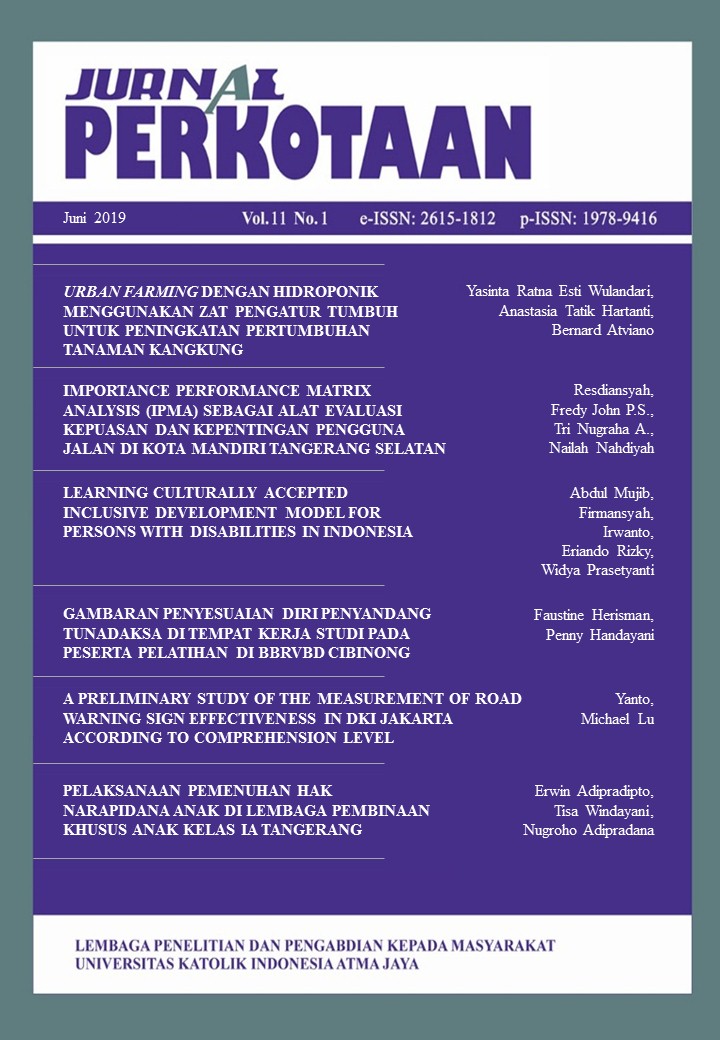THE URBAN FARMING DENGAN HIDROPONIK MENGGUNAKAN ZAT PENGATUR TUMBUH UNTUK PENINGKATAN PERTUMBUHAN TANAMAN KANGKUNG
DOI:
https://doi.org/10.25170/perkotaan.v11i1.582Keywords:
auxin,, BAP,, cytokinin, IAA,, water spinachAbstract
Urban farming activities with hydroponics techniques is one of the positive activities that can improve the creativity of people in urban areas. Urban farming activities can help improve the quality of people's lives, the environment, and play a role in maintaining food security. The study consisted of independent variables consisting of several groups, namely control (AB-Mix), 0.5 ppm of IAA (Indole Acetic Acid), BAP (Benzyl Adenine Purine) 0.5 and 1.0 ppm, and combination of IAA / BAP 0.5 /1.0 ppm. The purpose of this study was to study the effect of these treatments on water spinach plant yields that include leaves number, plant height, antioxidant content, and water content. The results of morphological growth showed that treatment with IAA 0.5 ppm was the most optimal while treatment with 1.0 ppm BAP had the average of the shortest plant height, the average number of leaves at least, and the shortest root length average. While the chlorophyll test showed that the system unit with the treatment of 0.5 ppm IAA had the highest total chlorophyll content with an average of 9.55 μg/ml. From the overall result, it can be assumed that the IAA of 0.5 ppm has the most positive effect on water spinach among other treatments.










